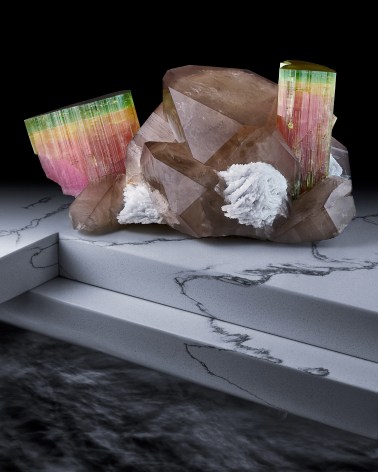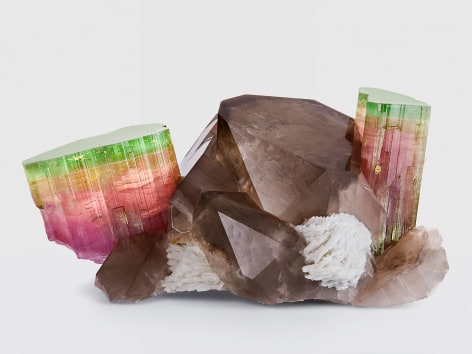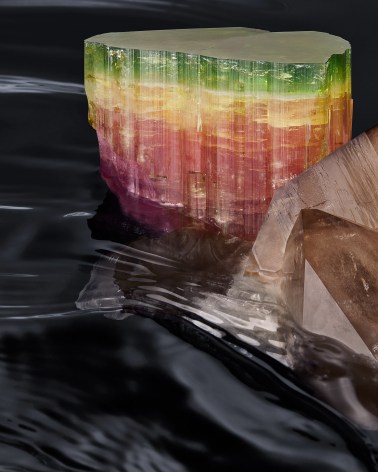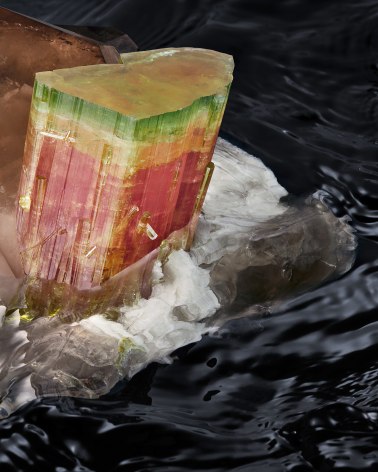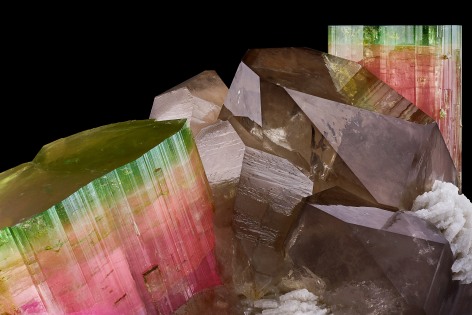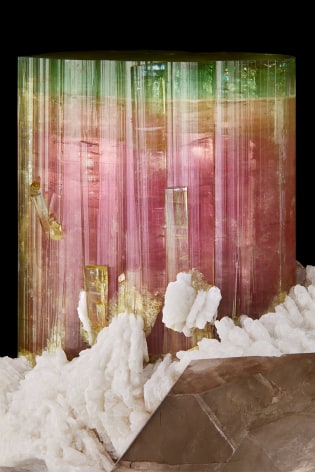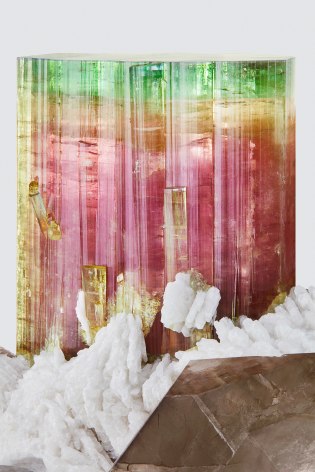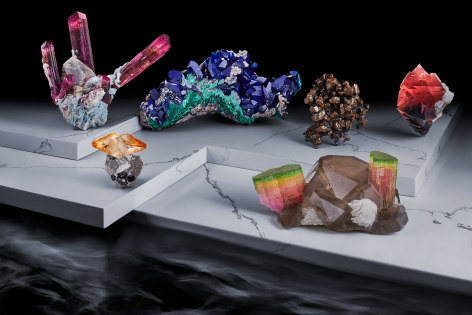Tourmaline with Smoky Quartz and Cleavelandite
Paprok Mine, Kamdesh District, Nuristan, Afghanistan
10.2 cm tall x 20.5 cm wide
Ex-collections Bruce Oreck and Irv Brown
In ancient Egyptian folklore, tourmalines traveled from the depths of the earth all the way to the edges of the sun along a rainbow—this is why it has so many colors. This piece was mined from a small, but very special pocket known as The Rainbow Pocket in 2009. In this pocket, only three pieces of significance were found. This is considered to be the finest quality, both for color and aesthetics. This small group possesses distinct color stacking. Beginning with a strong vibrant pink, then a sharply delineated band of yellow, and terminating in an equal thickness of green. Yellow tourmaline is among the ultimate rarities, further solidifying the prestige of The Rainbow Pocket.
Two crystals of tourmaline frame a smoky quartz crystal. Tucked in between the crystals are hills of bladed snow white cleavelandite. The flat planes of the smoky quartz reflect the colors of the tourmalines as if they were hovering above a still pond. The Rainbow Mountains falls into the recall category of “once seen, never forgotten”.
The Rainbow Mountains hail from the perilous cliffs of Afghanistan. Its birth place, the Hindu Kush Mountains, is extreme in every conceivable variable. These hulking mountains have sheltered and protected this specimen. Formed over 55 million years ago, the mountains are 6000 meters above sea level. Half of the year the temperature is below freezing with powerful winds and torrential snowfall. The arduous hike up the mountain can take 6–12 hours depending on the mood of the mountain. The mines are simple cavities dangerously excavated into sheer vertical cliff faces. Mining is nearly impossible except for a narrow window, just a few weeks per year. Discovering a specimen of this magnitude is a once in a lifetime event.
Rainbow Mountains was pictured in The Mineralogical Record in September 2017.

